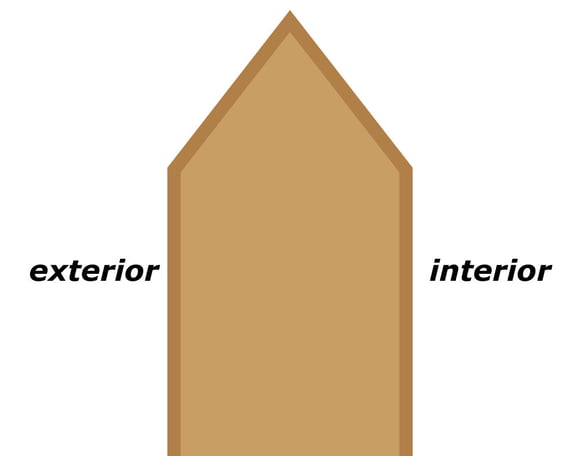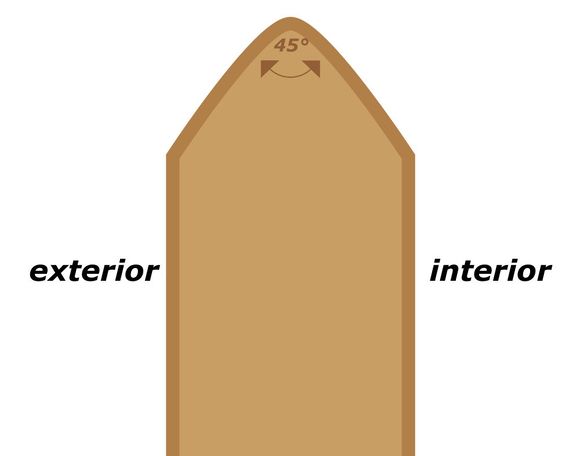7. Bearing Edge
The bearing edge is what we call the edge of the drum shell the skin rests on. You do not require a great deal of imagination to be able to guess that the shape and quality of this edge has a decisive influence on transmitting the skin's vibration to the shell and therefore the drum's resonance.
Correspondingly, the bearing edge (along with the material used) is one of the most important criteria available to drum creators to influence the sound of a drum shell.
The extent of the bearing edge's influence should become apparent from the following example:
A finger laid on the skin mutes its resonance. The bearing edge has the same effect. The area of skin and shell contact along the bearing edge of a modern 12 drum (width of the bearing edge at 0.8mm) amounts to 7.5 square centimetres. This corresponds to the muting effect of a single index finger applied to the skin. By doubling the width of the bearing edge to a mere 1.6mm (doesn't seem that much, right?), you achieve the dampening effect o two fingers.
So, even fairly minor changes to the shape of the bearing edge can result in massive changes to the sound. But the muting effect of the bearing edge is only one half of the story. The contact of skin and shell through the bearing edge, besides muting the sound, is also the decisive factor in transmitting the vibrations to the shell. The type and shape of a bearing edge is thus a compromise of muting and transmission!
NOTE: The exacting and even execution of the bearing edge throughout the contact area is crucial for the best possible performance of your tom. Only the complete package - a perfectly smooth bearing edge, a perfectly round round shell, and a perfectly fitted hoop - guarantees this optimum performance. If a tom sound dull and lifeless even with new skins, it may be worth your while to have a look at the bearing edge. Should this edge be no longer in perfect shape, you can save yourself the expense of new skins and rather invest in having your bearing edge re-done.
We have been busy with our graphics department to give you an overview of the effects of the various most popular kinds of bearing edges on the sound of a shell:

Single Bearing Edge
The classic is the modern bearing edge at a 45° angle. Thanks to their relatively wide contact surface, shells with a single 45° angle bearing edge sound subjectively deeper and somewhat more muted than, for example, shells with a double 45° angle bearing edge. This is the ideal type for rock sets.

Double Bearing Edge
The modern standard! The very tightly defined contact surface facilitates easy tuning and creates an open, dynamic sound. If you are looking for a modern all-round high-end set, the double bearing edge is the one for you!

Rounded Single Bearing Edge
The flanks are relatively steep, the tip of the edge is dulled to a round tip. In comparison to a "normal" 45° double bearing edge, the contact area is slightly larger. If you are an aficionado of the modern arr-round set but appreciate a reminiscence of vintage sound, you will be more than happy with this type of edge.

Vintage Roundover Edge
The ideal bearing edge for vintage fans! A relatively large contact area and a sonorous, very warm sound.
There are as many variations to the bearing edge as there are manufacturers. Still: the examples we have shown you can help you judge the different bearing edges.
Rule: A bearing edge at a very flat angle of 35° and round edge creates more contact to the skin and thus a mutes sound. A more acute angle (45° and more) and a more pointed edge delivers more resonance and a correspondingly more open sound.






